The East Midlands Oral History Archive (EMOHA) and The University of Leicester Special Collections have launched a new project, ‘Sounds for the Future’. The project is funded by The National Lottery Heritage Fund and will run from May 2022 to October 2023 with the objective of preserving, cataloguing and using EMOHA’s existing oral history collections.
This photo shows me sitting in the office of the East Midlands Oral History Archive (EMOHA) in the Attenborough Tower on the campus of the University of Leicester cataloguing a collection of more than 200 photos relating to World War Two and Leicester. Why does the EMOHA have the photos to start with? Well, that is the question! According to Colin Hyde, who has run the EMOHA and been at the University for a long time, the photos were collected by the History Department in the 1980s and were loaned to the Living History Unit – a City Council heritage project – possibly as early as 1993/4. The University lecturer responsible for the photos fell ill and had to retire, so no one realised that the photos had gone. Or maybe he intended them to stay with the Living History Unit?
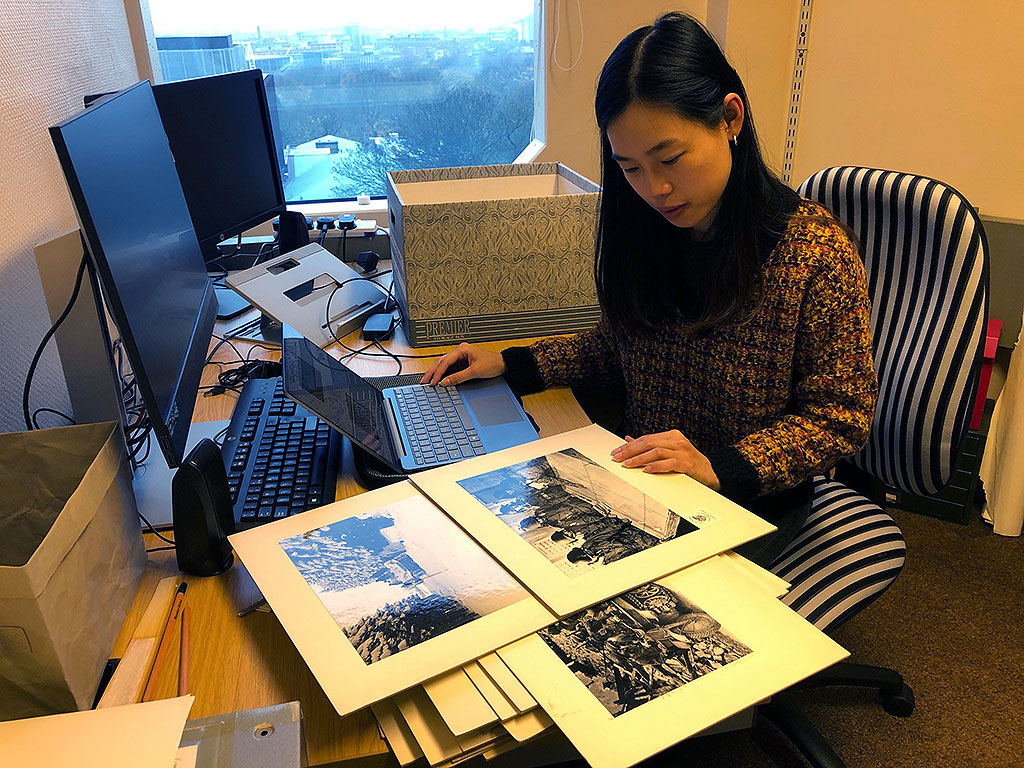
What are pictured?
The EMOHA mainly works with audio recordings, so I am excited to have the opportunity to explore these photos. Growing up in Hong Kong, I only learnt about the bigger events that happened during World War Two through history textbooks and films. Here, these photos present some less dramatic perspectives, and this made me curious to learn about the civilians on the home front during the war. As a cataloguing volunteer, my work involves recording the year, caption, and location, as well as noting anything unique to the photos. Looking at the photos, some are straightforward, like evacuees getting off in train stations as they made Leicester their new/temporary home, the preparation work at the start of World War II, the destruction of buildings, and the celebration of VE Day in Leicester. In this blog, I highlight some photos and my discoveries.
Some Highlights
Leicester went through a rough time when the war broke out . As I imagine today, normal life was threatened – people had to constantly be worried about getting enough food, getting hit by a falling bomb and losing their loved ones.
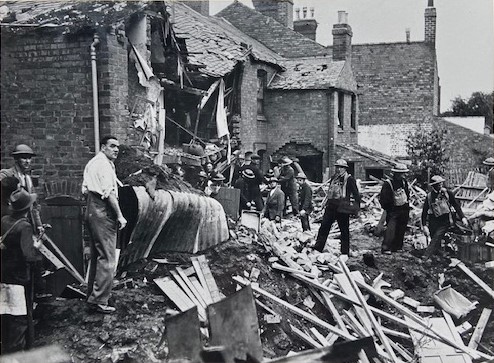
The photo on the left shows that several officers were called to this bomb site to survey the damage.
(CREDIT: Leicester Mercury)
During the Blitz, 1940-1941, German bombers attacked British cities day and night causing great destruction and loss of life. Several parts of Leicester were targeted. You may have seen similar pictures! Many people remember the raid on the night of 19-20 November 1940 when Leicester was hit worst.
Describing what is happening in an image in an accurate and concise way is key in cataloguing, as it is necessary to ensure they can be found quickly and easily when needed. One of the challenges is to identify the location. Luckily there are captions written by people years ago on the back of the photos. However, most of the time these locations are not very specific, possibly as to avoid informing the enemy.
The photo on the right was taken during an Air Raid Precaution (ARP) exercise with mock patients conducted in April 1941. ARP wardens were given steel helmets and carried out first-aid in case of injury.
(CREDIT: Leicester Mercury)
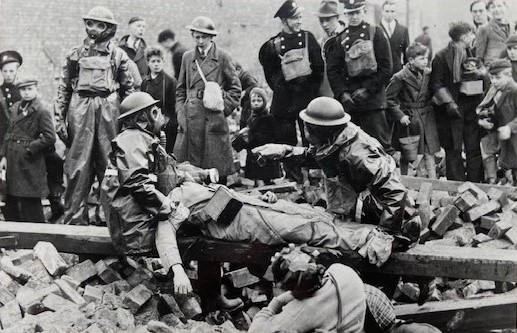
Schooling was disrupted during the Second World War. One striking photo for me is the one below, which shows children wearing gas masks at school. It must have been stuffy, and their vision would have become blurry with the steam. It gives a sense of Déjà vu – it reminds me the goggles and masks we had during Covid times, but this one covers the whole face! Fortunately, gas was not used against Britain in World War Two. I learnt that chlorine, phosgene, and mustard gas played a big part in World War One and, fearing the potential of chemical warfare, the government advised citizens to carry gas masks at all times.

The caption of this photos reads: “Practice at wearing gas masks at play: Children of Catherine Street Infants School, Leicester, 29 April 1941”.
(CREDIT: Unknown)
In the following photo, we can see people waving their hands as they were getting on a tank. At an initial glance, I hoped the Peugeot symbol and the serial number would point me to the model of the tank. Later, I found out, a military display was held for Leicester munitions workers on June 22, 1942. Civilians were mobilized to contribute to the war in another way. Soldiers staged a mock battle and gave them rides in open Bren gun carriers. This certainly helped bolster morale, while the government gave rosy pictures of the war.
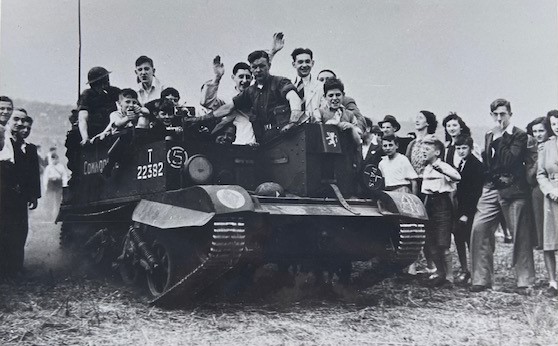
This photo shows people riding on a Bren gun carrier.
(CREDIT: Leicester Mercury)
American Soldiers’ Involvement
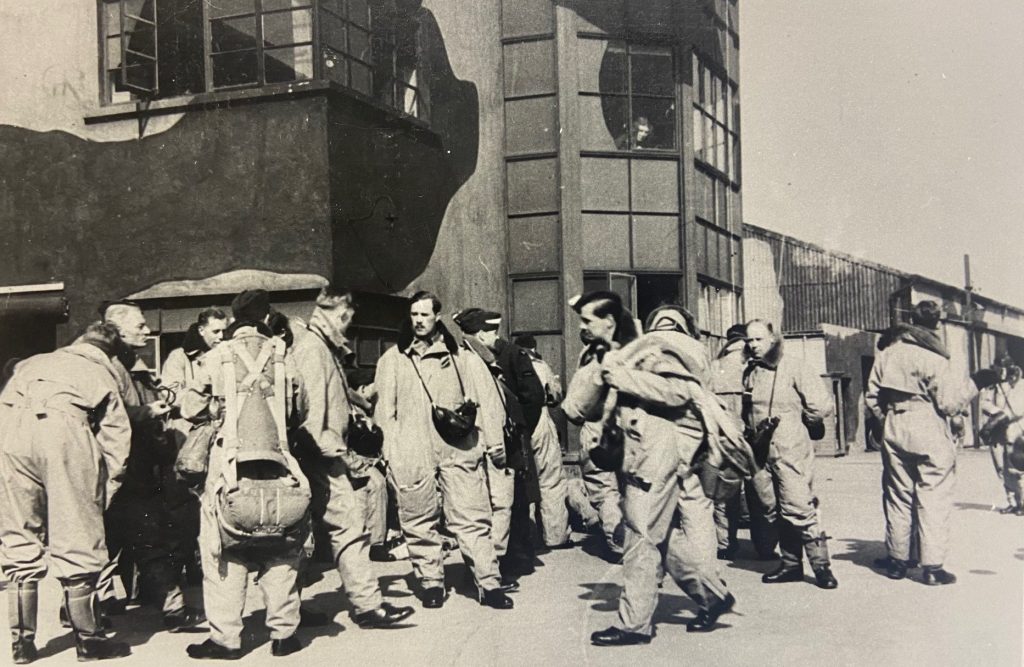
A portion of the images are related to the American soldiers in Leicester during World War Two. American military bases were set up in and around Leicestershire. The American troops conducted training exercises and were preparing for the eventual invasion of Europe on D-Day, 6 June 1944. The outfits suggest they are in parachute training.
(CREDIT: UNKNOWN)
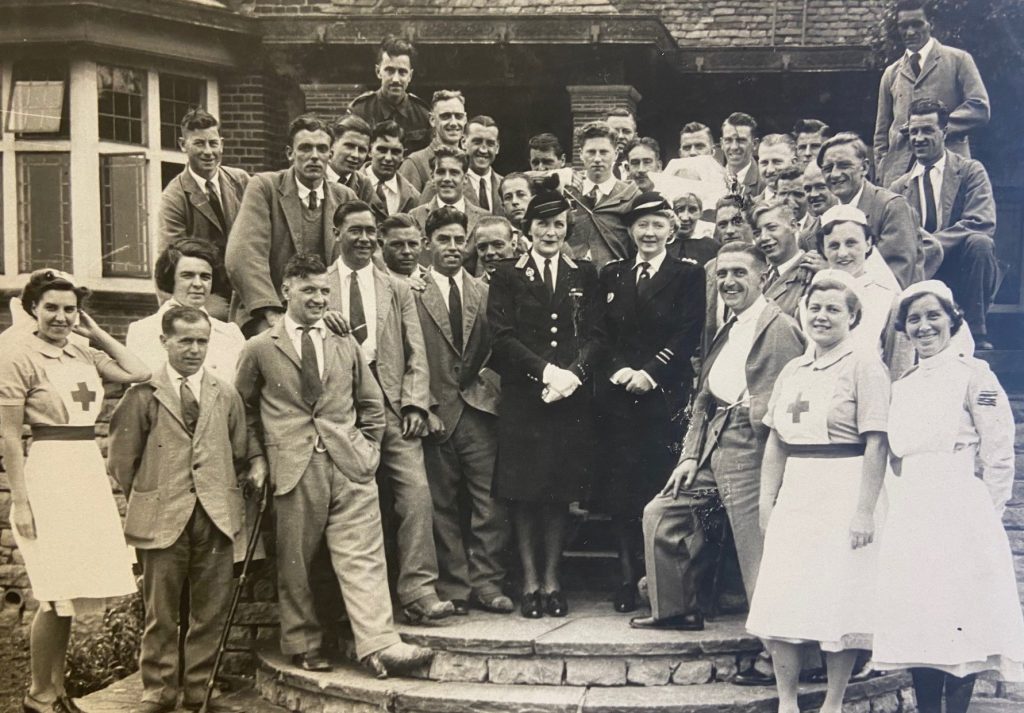
Meanwhile, some wounded soldiers stayed at a Convalescent Home at the Yews, Oadby, with the care of some Red Cross staff. This photo was taken when Lady Mountbatten paid a visit in April 1943. It’s hard not to notice the gender balance at the time. The men in suits look to me like soldiers, and the nurses are women.
(CREDIT: UNKNOWN)
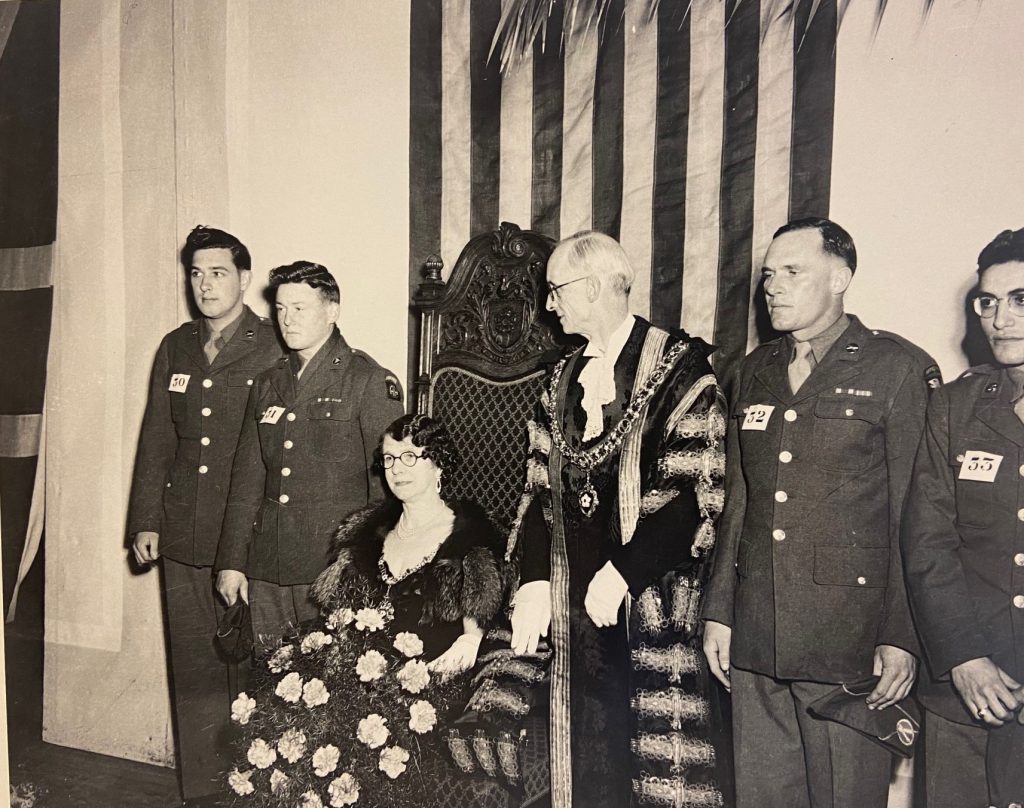
This is an image taken some decades later in Leicester. The soldiers stood proudly, with a number on their chests, at an event where their contribution to helping defeat Nazi Germany and liberate Europe was remembered and recognized. The Lord Mayor of the City of Leicester honoured the men of 82nd Airborne Division in 1976.
(CREDIT: UNKNOWN, possibly Leicester City Council)
There are some photos that, perhaps, were taken outside the UK. According to a document attached to the pile of photos, they were taken by Mr. Albert Nelson who served with the 82nd Airborne Division of the U.S. Army. He is one of the soldiers who travelled away from home and came to Leicester in 1944. They are photos those taken by Nelson during the time he joined Camp Manila, Utah, in the 1930s before the war. Camp Manila, Utah was part of the Civilian Conservation Corps (CCC) which was a work scheme for young men running from 1933 to 1942 in the United States. There are photos showing the inside of CCC barracks and workers doing forest work. Probably this experience led Mr. Nelson to fight in the war. When the war was over, he returned to the United States in 1945, later emigrated to England and lived in Leicester. So that explains his connection to the city and how some photos taken in Utah have ended up here.
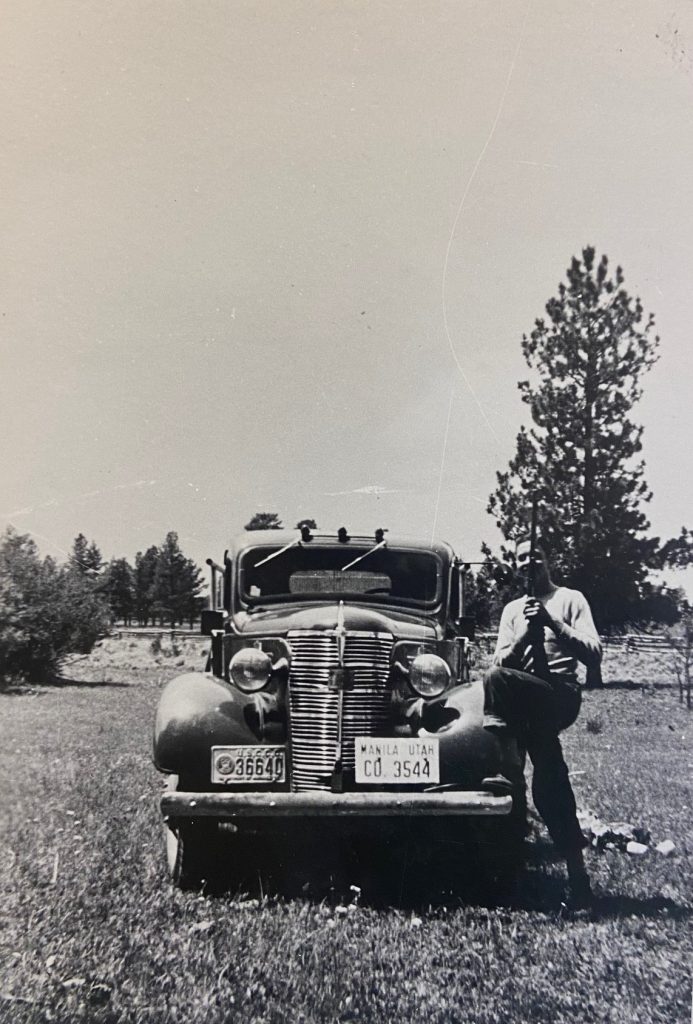
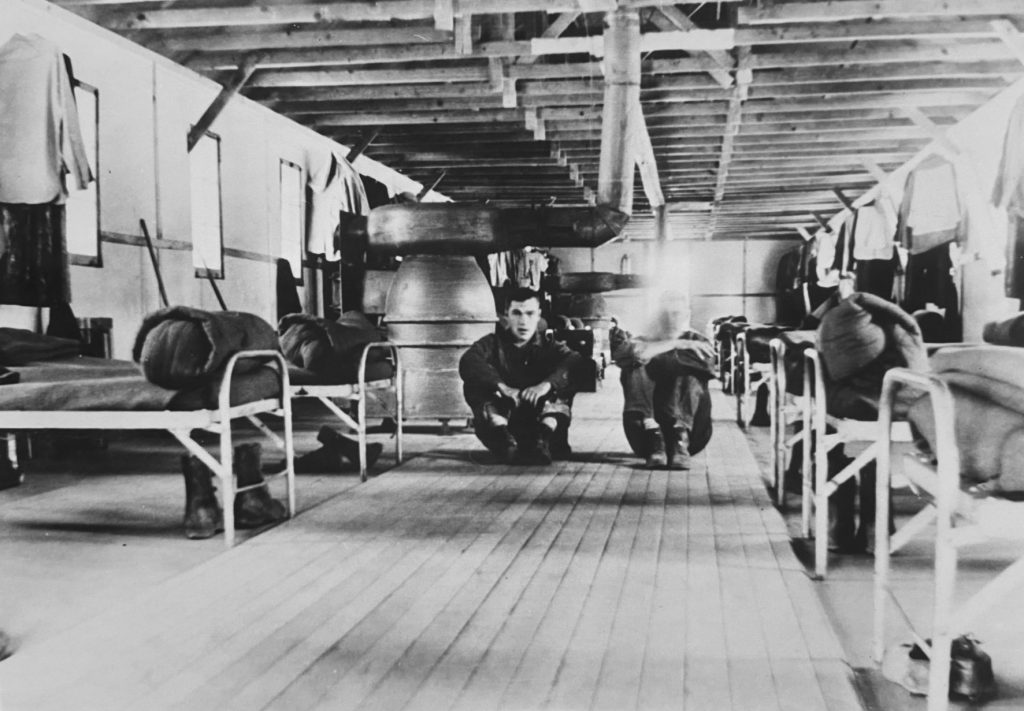
(CREDIT: ALBERT NELSON)
I hope this post makes an interesting read. Not all the photos are catalogued, but the intention is to make them all accessible to anyone who would like to view them by appointment with the EMOHA.
The Living History Unit photographs are copies of originals, the provenance of which is unknown. Many are likely to have been taken for local newspapers, such as the Leicester Mercury, whose archive is held by the Archives and Special Collections. We have sought to identify the rights holders for the images reproduced in this blog post. If you feel your copyright has been infringed in anyway, please read our takedown policy and contact us with any concerns.
Sounds for the Future is funded by the National Lottery Heritage Fund. Thank you to National Lottery Players for making this work possible.


 Subscribe to Karin Li's posts
Subscribe to Karin Li's posts
Comments are closed, but trackbacks and pingbacks are open.